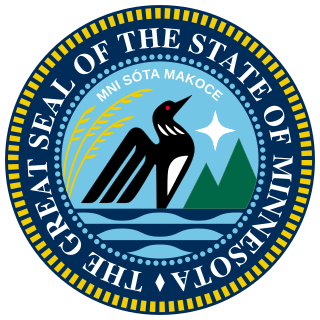In the United States, a state court has jurisdiction over disputes with some connection to a U.S. state. State courts handle the vast majority of civil and criminal cases in the United States; the United States federal courts are far smaller in terms of both personnel and caseload, and handle different types of cases. States often provide their trial courts with general jurisdiction and state trial courts regularly have concurrent jurisdiction with federal courts. Federal courts are courts of limited jurisdiction and their subject-matter jurisdiction arises only under federal law.
The Supreme Court of the State of New York is the trial-level court of general jurisdiction in the judiciary of New York. It is vested with unlimited civil and criminal jurisdiction, although in many counties outside New York City it acts primarily as a court of civil jurisdiction, with most criminal matters handled in County Court.
The Superior Court of Justice is a superior court in Ontario. The Court sits in 52 locations across the province, including 17 Family Court locations, and consists of over 300 federally appointed judges.
The structure of the judiciary of Texas is laid out in Article 5 of the Constitution of Texas and is further defined by statute, in particular the Texas Government Code and Texas Probate Code. The structure is complex, featuring many layers of courts, numerous instances of overlapping jurisdiction, several differences between counties, as well as an unusual bifurcated appellate system at the top level found in only one other state: Oklahoma. Municipal Courts are the most active courts, with County Courts and District Courts handling most other cases and often sharing the same courthouse.
The New Hampshire Superior Court is the statewide court of general jurisdiction which provides jury trials in civil and criminal cases. There are 11 locations of the Superior Court, one for each county and two in Hillsborough County.
The Superior Court is the state court in the U.S. state of New Jersey, with statewide trial and appellate jurisdiction. The New Jersey Constitution of 1947 establishes the power of the New Jersey courts. Under the State Constitution, "'judicial power shall be vested in a Supreme Court, a Superior Court, and other courts of limited jurisdiction.'" The Superior Court has three divisions: the Appellate Division is essentially an intermediate appellate court while the Law and Chancery Divisions function as trial courts. The State Constitution renders the New Jersey Superior Court, Appellate Division the intermediate appellate court, and "[a]ppeals may be taken to the Appellate Division of the Superior Court from the law and chancery divisions of the Superior Court and in such other causes as may be provided by law." Each division is in turn divided into various parts. "The trial divisions of the Superior Court are the principal trial courts of New Jersey. They are located within the State's various judicial geographic units, called 'vicinages,' R. 1:33-2(a), and are organized into two basic divisions: the Chancery Division and the Law Division".
The First Judicial District is the judicial body governing the county of Philadelphia, Pennsylvania, United States. It consists of the Court of Common Pleas of Philadelphia County and the Philadelphia Municipal Court.
The Maine Superior Court is the trial court of general jurisdiction in the Maine state court system.

The Florida circuit courts are state courts and trial courts of original jurisdiction for most controversies. In Florida, the circuit courts are one of four types of courts created by the Florida Constitution.

The Minnesota Court of Appeals is the intermediate appellate court in the U.S. state of Minnesota. It began operating on November 1, 1983.

The Connecticut Superior Court is the state trial court of general jurisdiction. It hears all matters other than those of original jurisdiction of the Probate Court, and hears appeals from the Probate Court. The Superior Court has 13 judicial districts which have at least one courthouse and one geographical area court. Civil cases, administrative appeals, family matters, and serious criminal offenses are generally heard in a judicial district courthouse. All criminal arraignments, misdemeanors, felonies, and motor vehicle violations that require a court appearance are heard in one of the 20 geographical area courts.

The Superior Court of Los Angeles County is the California Superior Court located in Los Angeles County. It is the largest single unified trial court in the United States.

The Wisconsin circuit courts are the general trial courts in the state of Wisconsin. There are currently 69 circuits in the state, divided into 9 judicial administrative districts. Circuit court judges hear and decide both civil and criminal cases. Each of the 249 circuit court judges are elected and serve six-year terms.
The Unified Judicial System of Pennsylvania is the unified state court system of the Commonwealth of Pennsylvania.
The Rhode Island Superior Court is the state trial court of general jurisdiction in Rhode Island.

Wyoming District Courts are the state trial courts of general jurisdiction in Wyoming.

The Massachusetts Superior Court is a trial court department in Massachusetts.
Business courts, sometimes referred to as commercial courts, are specialized courts for legal cases involving commercial law. In the US, they are trial courts that primarily or exclusively adjudicate internal business disputes and/or commercial litigation between businesses, heard before specialist judges assigned to these courts. Commercial courts outside the United States may have broader or narrower jurisdiction than state trial level business and commercial courts within the United States, for example patent or admiralty jurisdiction; and jurisdiction may vary between countries. Business courts may be further specialized, as in those that decide technology disputes and those that weigh appeals. Alternative dispute resolution and arbitration have connections to business courts.
The Florida State Courts System is the unified state court system of Florida.
Jerome B. Abrams is an American judge who served as a district court judge in Minnesota for 14 years. He has been involved with studying and implementing changes to the civil litigation process in Minnesota and nationally.








